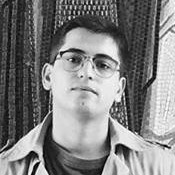[EN] До 20 января принимаются заявки на участие в конференции «“Иллюзии, убитые жизнью”: посмертная жизнь (советского) конструктивизма»
Princeton, May 10-12, 2013.
 1 514
1 514 
PRINCETON UNIVERSITY
PROGRAM IN RUSSIAN AND EURASIAN STUDIES
Princeton Conjunction – 2013:
An Annual Interdisciplinary Conference
Call for Papers
“ILLUSIONS KILLED BY LIFE”:
AFTERLIVES OF (SOVIET) CONSTRUCTIVISM
May 10-12, 2013
Princeton
http://afterlivesofconstructivism.wordpress.com/
In 1923, the influential Russian writer Maxim Gorky complained in one of his letters: “In Russia, formalists, futurists, and certain people called constructivists perform all kinds of deformity. It must be stopped.” Stopped it was not. In the early 1920s, Russian Constructivism emerged as a key emblem of Soviet modernity that responded to the call to “materially shape the flux” of social life, as Alexei Gan put it. It did this through a series of crucial theoretical, aesthetic, and technological interventions which broke with the artistic languages of the past and, simultaneously, offered new tools for organizing a new life. Penetrating all spheres of the everyday – from housing, tableware and clothing to public space, mass performances and journalism – Constructivism fundamentally changed not only the vocabulary of expressive means but also the very understanding of the material environment and its social potentialities.
In the last two decades, this initial and most productive period of Constructivism has captured the interest of scholars again and become a privileged site of analytic and historical investment. The goal of this conference, however, is to shift scholarly attention to a less radical but no less complex stage in this movement’s history: the afterlife of Constructivism. In 1922, Boris Arvatov, a leading art critic of the time, described the Constructivist approach as “illusions killed by life,” seeing in the sober rationality of this movement a viable alternative to the illusionist and mimetic arts of the past. It is precisely this ability of Constructivism to turn dead illusions into a source of inspiration that this conference plans to investigate.
We invite proposals that explore the remains, revenants and legacies of Soviet Constructivism through the 1940-1970s – both in the USSR and beyond. We are interested in historically grounded and theoretically informed papers that map out the post-utopian and disenchanted period of “the Constructivist method.” No longer “a Communist expression of material constructions” (to use Gan’s formulation), these belated Constructivisms made themselves known mostly indirectly: for example, in the heated debates about the role and importance of aesthetics under socialism, in the functionalist idiom of mass housing, in the visual organization of museum space, or in the reception and development of constructivist concepts in architectural deconstruction.
We welcome submissions from historians, anthropologists, sociologists, as well as scholars of architecture, media, art, theater and literature who explore the suspended presence of (Soviet) Constructivism in the USSR, Europe, the USA, and the Middle East in the 1940-1970s.
What social, intellectual or artistic genealogies were originated – directly or indirectly – by the “people called constructivists?” How was the Constructivist concern with “a deeply agitating action,” which imbued “the life of a form” (M. Ginzburg), translated and transposed into the realm of architecture after the Second World War? To what extent did Constructivism’s desire to “create a system of molding the thing as such” (Gan) influence the material culture and the production of objects of mass consumption in the 1940-1970s? In what way did the efforts of Constructivist photographers and filmmakers to “touch with the gaze” (A. Rodchenko) rewire the protocols of human perception, influencing the cinematic conventions and photographic aspirations of later generations of media practitioners? How should we theorize the relationship and resemblances between the original Constructivist practices and the Neo-Constructivism of the postwar period––as repetition, institutionalization, recuperation or sheer intransigence? And, finally, how do we understand and explain the everlasting investment of Western intellectuals and art institutions in New York, Paris, Chicago, etc. in constant reiteration and reproduction of the utopian promise of early Soviet Constructivism? What is gained and what is lost in these attempts to keep Constructivism alive?
These are only a few directions through which reverberations and after-effects of Soviet Constructivism could be explored. In addition to these areas of inquiry, we encourage proposals that offer more biographically-driven case studies of constructivists and their projects in the 1940-1970s.
Abstract (300 words) and a short CV (2-3 pages) should be sent to Serguei Oushakine at [email protected] by January 20, 2013.
Those selected to give presentations at the conference will be contacted in early February 2013. Final papers will be due no later than April 15, and they will be posted on the conference website.
We might be able to offer a number of travel subsidies for graduate students and participants from the overseas.
Program Committee:
Serguei Oushakine (Princeton University), Chair,
Esther da Costa Meyer (Princeton University),
Stephen Harris (University of Mary Washington),
Kevin M.F. Platt (University of Pennsylvania),
Irina Sandomirskaja (Södertörns Högskola).




Комментарии